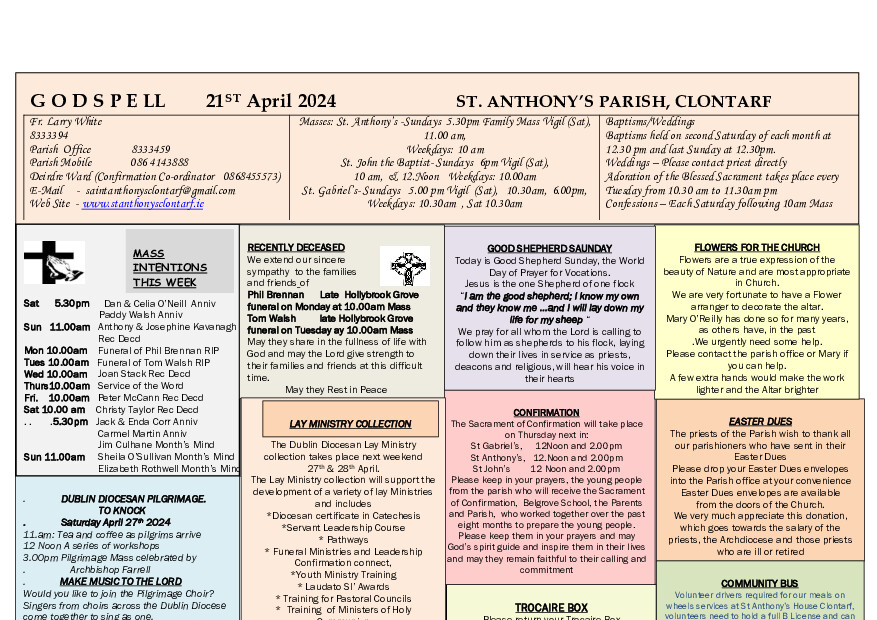Meditation Group Origins
The origins of Christian Meditation
Christian Meditation is not something new. It is central to the Christian experience and deeply rooted in Christian tradition.
In this introduction, I would like to outline its long history. In the John Main tradition of meditation we use the mantra – Maranatha. This is an Aramaic word, the language spoken by Jesus, meaning “Come Lord Jesus”. It was a common prayer among the early Christians.
The practice of meditation was deeply rooted in the lives of the 4th century desert fathers. These 4th century forerunners of our contemplative orders had gone to the desert in an effort to live out their calling to open themselves to the life of Jesus within them. For them the desert in Egypt had the attraction of being free from noise, free from distraction and free to draw closer to Jesus through prayer. However, it did not take them long to realize that that the most frequent distraction to prayer, came not from our external environment but from within. The constant flow of images, desires, memories and aspirations were the source of their greatest distractions. As a means of centring their prayer and focusing on God’s presence within, they developed the practice of constantly repeating a mantra or short prayer formula.
We have to thank John Cassian for providing the bridgehead between the practice of the desert fathers and the monastic tradition in Europe. John Cassian was born in Croatia, also in the fourth century. He spent 12 years visiting various hermits in Egypt and studying the lives of the desert fathers. His subsequent writings had a major influence on St. Benedict and through him, on the whole of western monasticism. In his 9th and 10th Conferences, Cassian recorded all that he had learnt on prayer from the desert fathers. In his writings, Cassian refers to a contemplative tradition based on continuous prayer with emphasis on the indwelling spirit of Jesus and the continuous repetition of the formula or mantra.
While the contribution of John Cassian was to link the practice of the Desert Fathers to Western monasticism, John Main’s role was to re-introduce this tradition to Christianity and in the process develop a contemplative tradition in the mainstream of Christian practice; to develop in his own words “A monastery without walls”. Ironically, John Main’s first encounter with this contemplative tradition was when he was working for the British Colonial Service in Malaysia in 1955. In the course of his work, he met a Hindu monk who greatly impressed him by the love and commitment with which he went about his work of running an orphanage and a school. Filled with curiosity about his motivation, John Main asked him to explain the spiritual basis for his life and work. The monk attributed this to the daily practice of meditation. John Main was impressed and asked the monk to teach him how to meditate. John Main arranged to come for his lesson once every week.
On his first visit, the Hindu monk spoke about how to meditate …
To meditate you must become silent. You must be still. And you must concentrate. In our tradition we know one way in which you can arrive at that stillness, that concentration. We use a word that we call a mantra. To meditate, what you must do is to choose this word and repeat it faithfully, lovingly and continually. That is all there is to meditation. I really have nothing else to tell you. And now we will meditate.
So it began and so it continued. John Main visited the Hindu monk each week for the next eighteen months. On each visit they spent their time in meditation. At times John Main would ask his mentor “How do I know I am progressing?” But the answer was always the same “Just meditate”. This apprenticeship in meditation continued until John Main returned to Dublin and took up a post of lecturer in Trinity College in the faculty of law. Three years later, he decided to join the Benedictines. It was as a Benedictine monk that he came across the writings of John Cassian. In these writings, he found the link that had been missing. What Cassian had learnt in the desert in Egypt was what John Main had learnt from the Hindu monk in Malaysia. What they had in common was the repetition of a word to bring one to interior silence in prayer.
In 1974, John Main started his first meditation group in London. So began a pilgrimage that was to become the centre of the rest of his life – spreading the practice of Christian meditation across the world. Although he died at the relatively early age of 56, in 1982, John Main had rekindled the flame of meditation in Christian communities throughout the world. Today, there are more than 1,200 Christian meditation groups in 114 different countries. The work that John Main began has been continued by his friend and Benedictine confrere, Lawrence Freeman, leader of the World Community for Christian Meditation.
For me, Christian Meditation is also central to the Christian experience. The essence of meditation is summed up in the dictum “Let go and let God”. This echoes what Jesus tells us in St. John’s Gospel “Unless a grain of wheat falls into the ground and dies, it remains just a grain of wheat; but if it dies, it produces much wheat.”




